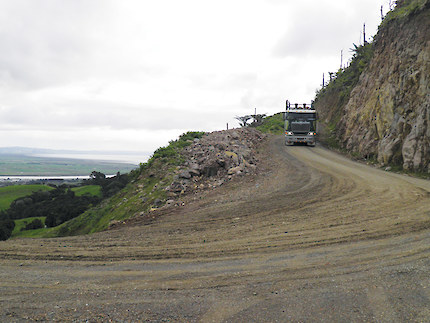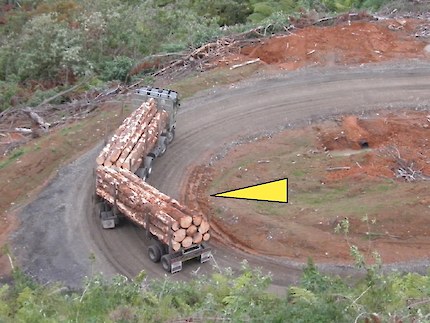Poorly constructed corners and in-bends can often cause road access or safety issues.

- The grade on the corner has been reduced to improve truck traction. On roads steeper than 12%, it is good practice to reduce grade on corners and intersections
- The corner is wider to accommodate heavy vehicle off-tracking
- The road has zero or negative superelevation on steep sections

- This steep, narrow corner caused trucking issues
- The corner is too tight for some trucks, causing them to cut the corner (see arrow)
- Build switchbacks with a minimum curve radius of 14 m; 16 m is preferred
- Extend pavement width to cater for trailers (about 4.5 m extra width)

- The inside of the road is benched to improve sight distance to address safety concerns